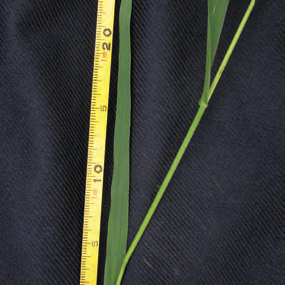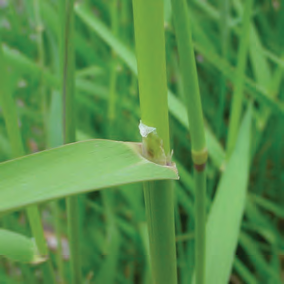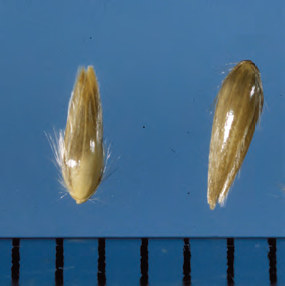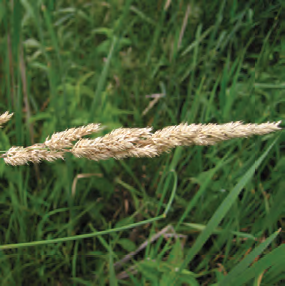Reed Canarygrass
Phalaris arundinacea
Grass Family (Poaceae)
Perennial Grass
Flowers: May–Jul
Native Range: North American and Eurasia. Invasive types are thought to possibly represent hybrids with agricultural cultivars.
Introduction: Cultivars introduced starting in the 1830s by agronomists for forage; still promoted by some agronomists.
Mid-Atlantic Range &Habitats: Swamps,marshes, roadsides, ditch banks, moist fields. Disturbed wetlands are more susceptible to invasion.


Reed Canarygrass often invades wetlands, moist fields, and other natural areas as a result of disturbance such as ditching and sedimentation. Once established, the species forms dense, monotypic stands, depositing a heavy layer of thatch that suppresses other vegetation. It spreads vegetatively by rhizomes, as well as by production of large amounts of seed. Reed Canarygrass stands have significantly reduced herbaceous plant diversity and soil insect diversity. Carbon and nitrogen sequestration levels in invaded sites are altered. There are indications that a high degree of morphological plasticity in invasive ecotypes contributes to the invasiveness of the species.

Quick ID
- Leaves: Leaf blades 1–3 dm long, 10–20 mm wide
- Ligules: Ligules large, thin and membranous
- Fruits: No long silky hairs present on the fruits
More ID Tips
Reed Canary-grass can grow to more than 2 m, while its native look-alikes grow up to 1.5 m tall. Both have dense, compact inflorescences. Reed Canarygrass has a slightly more prominent mid vein on the upper side of the leaf than the native reed grasses.


